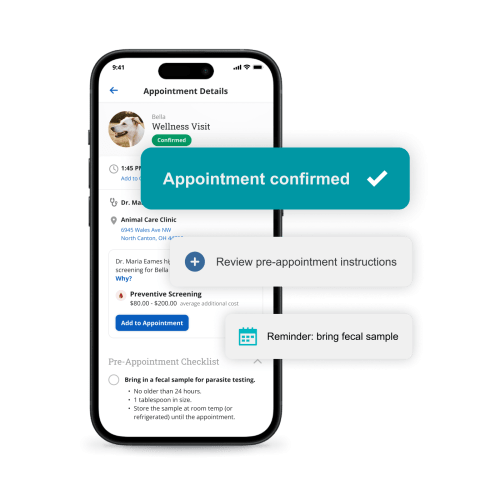7 Ways to Scale Your Veterinary Practice

Although economic conditions may cause the demand for veterinary care to wax and wane, the need for care isn’t going anywhere. Scaling, or increasing capacity and efficiency without adding or expending more resources, can help your veterinary practice meet demand. Veterinary practice owners can change daily operations to expand services, attract new clients, and boost their bottom lines. Here are some practical scaling strategies to help achieve your veterinary clinic’s goals.
The difference between scaling and growth
Scaling and growing a business sound interchangeable but are two different concepts. While each involves practice expansion, they use different methods to get there:
- Growth means adding resources, such as staff, equipment, technology, or additional locations, to accommodate greater demand. A growing practice can handle a higher caseload but deals with a proportional expense increase.
- Scaling means increasing work output and capacity without increasing expenses, leading to increased revenue. To scale, veterinary practices must optimize existing systems and workflows.
Many veterinary teams feel overwhelmed, and seeing more patients with the scarce resources you have may feel like a stretch. Before scaling or growing your practice, assess the health of your team culture and hospital finances. If you spot deficiencies in either area, tackle those first. When you’ve decided to scale, here’s how to get there.
1. Embrace technology
Technology can overhaul your clinic’s outdated protocols, eliminate repetitive or time-consuming tasks, and free up the team to dedicate more time to patients. Modern practice management software drastically reduces employees' time on the phone and simplifies scheduling, billing, inventory, and record-keeping. Telemedicine services cater to pet owners seeking convenient consultations. Artificial intelligence can transcribe conversations, summarize lengthy charts, and assist with nearly any administrative task. If you have an efficiency problem, there is likely a tool or piece of technology that can fix it.
2. Diversify services
New services can attract a broader client base and increase revenue. Build on your team’s interests and talents with targeted training and continued education, then use the newfound skills and knowledge to attract new pet-owning demographics. You can also redirect your energy into a wellness diagnostics and preventive healthcare campaign that boosts pet health without requiring additional training for your team.
3. Expand your digital footprint
A robust online presence helps teams engage with potential and existing clients in new ways and can anchor your marketing strategy without costing you an arm and a leg. Optimize your veterinary clinic’s website and post regularly on social media to connect with pet owners and showcase your services and expertise. If you have a team member with interest and writing skills, starting a blog can help you reach a wider audience.
4. Focus on the client experience
Providing exceptional client service encourages repeat visits and referrals. Simple gestures like follow-up messages after appointments and personalized pet care plans can go a long way in veterinary medicine but can also bog down team members. Adopting new software can streamline these tasks and make it easier for clients to reach you.
5. Optimize financial management
Understanding veterinary practice finances is necessary to achieve scaling or growth. You can't make actionable changes if you don’t know your current profitability (or lack thereof). Lean on your accountant’s expertise. Carve out space in the budget for a consultant to establish a new money management system and help monitor key metrics like cash flow, profit margins, and operational costs.
6. Invest in your team
You can’t be a business owner without a dedicated team. Training and professional development opportunities keep team members happy and ensure they deliver high-quality care. Engaged team members who feel appreciated will work harder to improve the business and support scaling efforts.
7. Explore partnerships
Collaborating with other veterinary professionals or pet-related businesses can open new avenues by improving your visibility in the community and online. Partnerships work by driving new business for both parties, so your team’s energy reserves won’t be taxed with extra duties. Aligning with organizations that share your values can amplify your impact in the veterinary industry.
Scaling your veterinary practice can help you do more with your current team and resources. Embracing technology, caring for team members, and committing to excellence in pet care can help you build a thriving practice that serves pet parents, employees, and the community.




